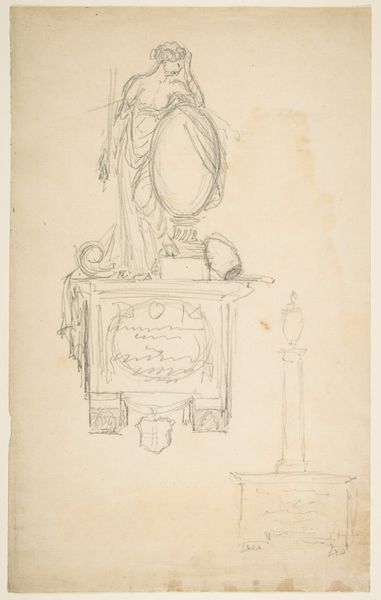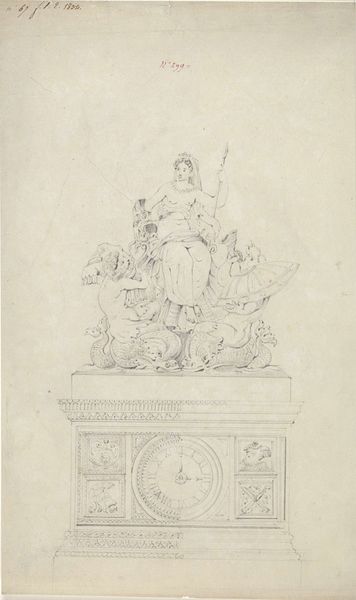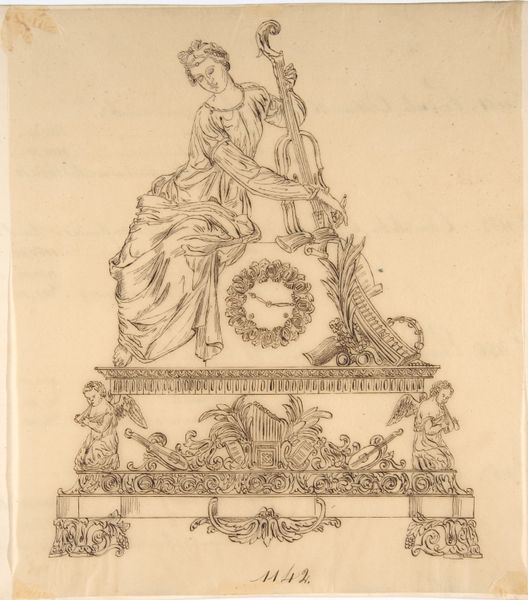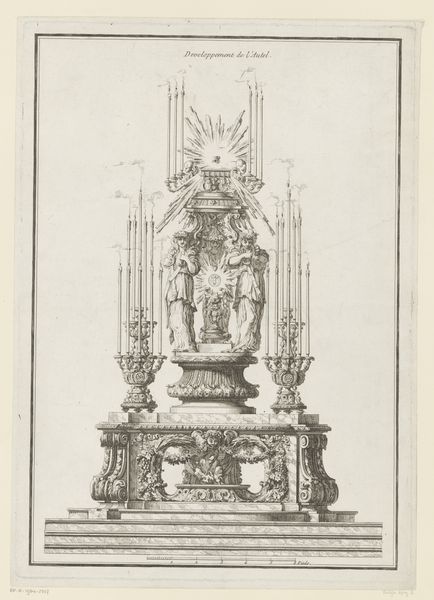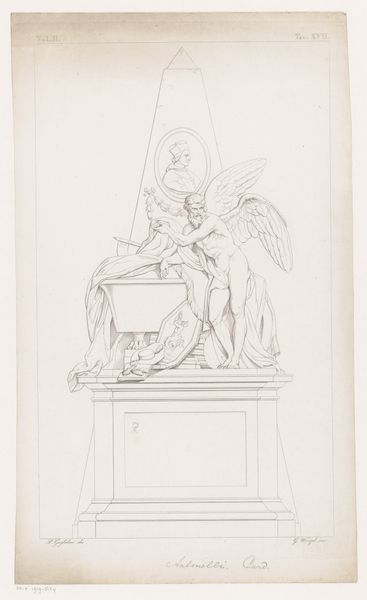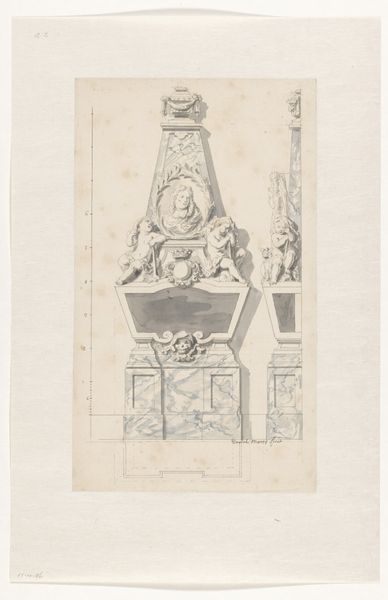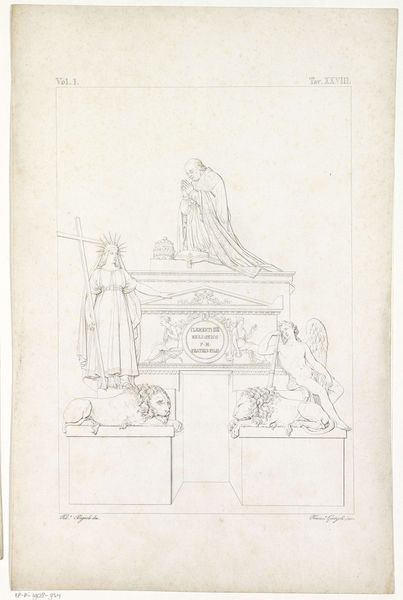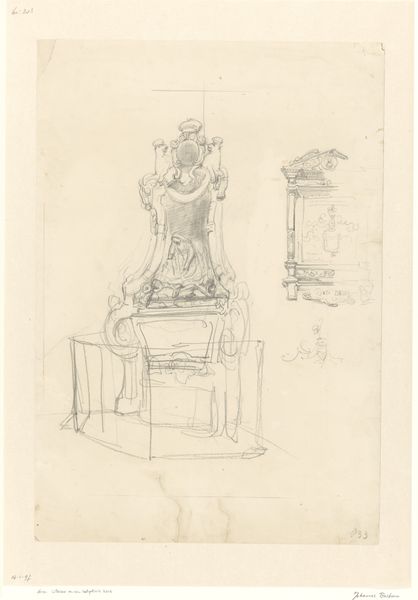
drawing, pencil
#
portrait
#
drawing
#
baroque
#
figuration
#
pencil
#
history-painting
#
academic-art
Dimensions: 14 7/16 x 10 1/8in. (36.6 x 25.7cm)
Copyright: Public Domain
Curator: This delicate pencil drawing is "Saint Peter Enthroned," created by Luigi Vanvitelli sometime between 1700 and 1773. It's currently held here at the Metropolitan Museum. Editor: The initial impression is one of ethereal grace. The spareness of the line contributes to an airy lightness. But there’s a precision to the composition despite its sketchy nature; notice the clear emphasis on line, form, and balanced symmetry in its organization. Curator: Absolutely. Looking at it through a materialist lens, it's fascinating to consider Vanvitelli's choice of pencil – a relatively accessible medium. This suggests a specific intended function, possibly a preparatory sketch for a larger work. We can ponder the labor involved and the economies of art production at the time, questioning the role of drawing within Vanvitelli's workshop. Editor: Precisely. Focusing on form, observe the baroque drama evoked through line alone. The implied movement in the swirling decorations surrounding the throne creates an almost palpable tension. Notice how the details of Saint Peter’s clothing are delineated in gentle lines, which bring out soft curves, contrasting the sharp edges of the throne's platform, conveying Peter's holy status. Curator: And how the materiality interacts with the message. This isn't just an aesthetic exercise. It's a carefully constructed image intended to communicate authority. The iconography, the throne, the keys…all symbols of power and legitimacy. It brings up important questions about the church's socio-political sway during the Baroque era and how Vanvitelli was employed. Editor: The artist meticulously crafts meaning through formal elements. Even without color, we understand the symbolism – keys to heaven, robes of authority, enthronement. I agree; there's a deliberate, almost calculated presentation, with semiotic complexity designed for educated viewers of the time. Curator: Examining Vanvitelli’s practice within his particular socio-economic context, and studying the labor dynamics within artistic workshops like his, brings a more complete awareness of the production of drawings such as this and situates the work within an economy of materials and skills, and that enriches our understanding. Editor: Indeed, both these levels of scrutiny—attention to material factors as well as the internal workings of visual language—converge on a deeper, fuller account of Baroque expression, even in a seemingly simple sketch.
Comments
No comments
Be the first to comment and join the conversation on the ultimate creative platform.
